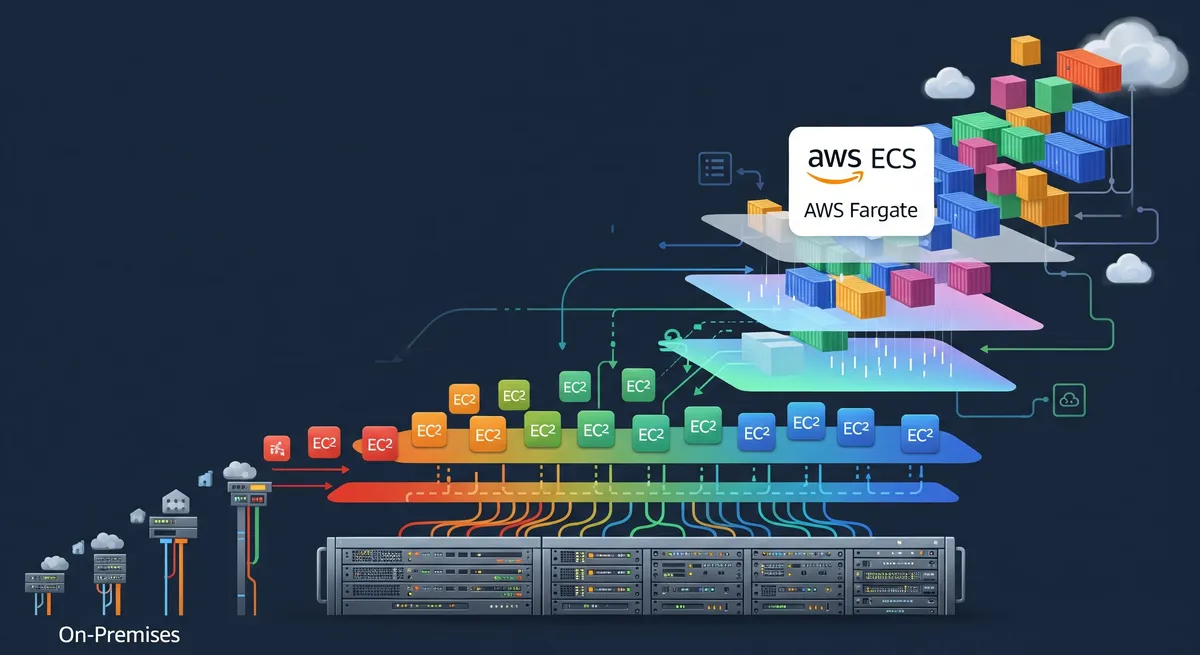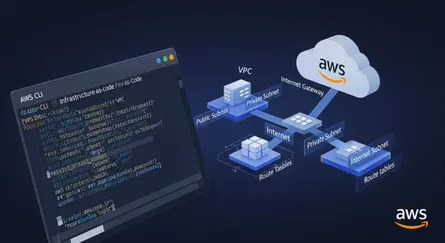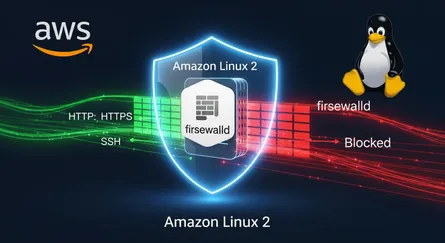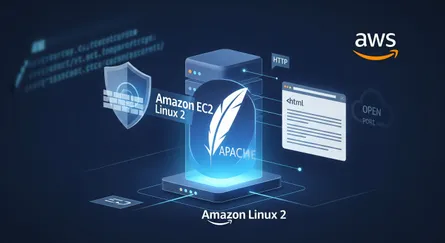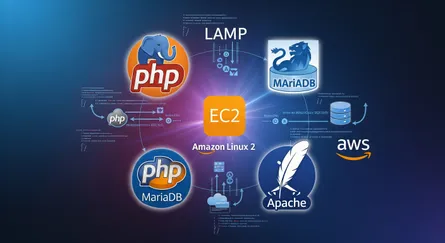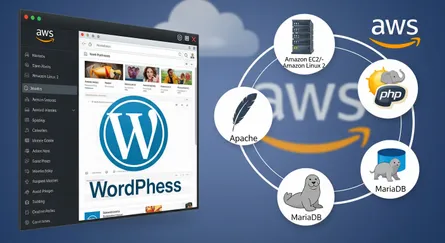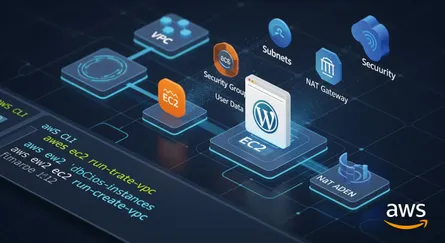Introduction
Are you a passionate AWS Cloud Engineer DevOps enthusiast, looking to sharpen your container orchestration skills and level up your cloud infrastructure management game? Amazon Elastic Container Service (ECS) is your key to unlocking a world of possibilities. In this in-depth guide, we’ll delve into the heart of ECS, addressing the most common questions that arise in this exciting domain.
What is ECS and EC2?
To begin, let’s tackle the fundamental question: What is Amazon Elastic Container Service (ECS), and how does it tie into Elastic Compute Cloud (EC2)?
Amazon Elastic Container Service (ECS) stands as a fully-managed container orchestration service designed to simplify the running, stopping, and management of Docker containers on a cluster of EC2 instances. It streamlines container deployment and scaling while maintaining robust security and high availability.
Elastic Compute Cloud (EC2), on the other hand, offers scalable cloud-based compute resources. It provides a diverse range of instance types, each optimized for various use cases. EC2 instances essentially serve as virtual servers in the cloud, capable of running multiple operating systems.
The connection between ECS and EC2 is clear: ECS leverages EC2 instances as the backbone for efficiently deploying and managing containerized applications. For DevOps professionals, ECS is a potent tool in the realm of containerization and orchestration.
What is the Difference between EKS and ECS?
You may have come across Amazon Elastic Kubernetes Service (EKS) and wonder how ECS sets itself apart. Let’s demystify the distinction.
Amazon Elastic Kubernetes Service (EKS) is yet another managed container orchestration service, but it is tailored for orchestrating Kubernetes clusters. Kubernetes, being an open-source container orchestration platform, has gained immense popularity. EKS offers a managed Kubernetes control plane and simplifies the deployment, management, and scaling of containerized applications using Kubernetes.
Amazon Elastic Container Service (ECS), as we discussed earlier, offers a similar service but is focused on Docker containers. The primary differentiator lies in the underlying orchestration system; ECS employs its proprietary system, while EKS relies on Kubernetes.
The choice between ECS and EKS is contingent on your specific requirements and your familiarity with Kubernetes. ECS is often a more straightforward choice for those deeply entrenched in the AWS ecosystem, seeking an efficient containerization solution.
What is Amazon Elastic Container Service Used to Deploy?
ECS isn’t just a buzzword; it’s a versatile workhorse capable of deploying a wide spectrum of applications. But what exactly can you accomplish with ECS? Let’s explore its diverse applications.
-
Web Applications: ECS is an excellent choice for deploying web applications that need to dynamically scale with varying traffic loads. Whether it’s a simple blog or a sophisticated e-commerce platform, ECS is up for the task.
-
Microservices: If your architectural framework relies on microservices, ECS offers a simplified approach to managing these small, independently deployable components.
-
Batch Processing: For processing substantial volumes of data in batch operations, ECS is a proficient solution, enabling efficient execution of batch jobs.
-
Stateful Applications: ECS seamlessly supports both stateless and stateful applications, ensuring adaptability for diverse use cases.
-
Machine Learning: If you’re running machine learning models within containers, ECS excels in the management of the containers where your models operate.
What is Elastic Container Service AWS? Amazon Elastic Container Service (ECS) is an integral part of the AWS ecosystem, but what makes it stand out among other container orchestration solutions? Let’s uncover the key features that make ECS a standout choice for AWS DevOps engineers.
- Easy Cluster Management: ECS abstracts the complexities of infrastructure management. You focus on defining your containerized applications, and ECS takes care of the rest.
- High Availability: ECS optimizes high availability and fault tolerance by distributing containers across multiple Availability Zones.
- Integration with AWS Services: ECS seamlessly integrates with other AWS services like Elastic Load Balancing, Identity and Access Management (IAM), and CloudWatch for comprehensive monitoring.
- Task Definitions: ECS provides the flexibility to define container configurations, making it effortless to specify resources, dependencies, and environment variables.
- Auto Scaling: ECS is equipped to automatically scale your application, whether up or down, in accordance with predefined policies, ensuring optimal resource utilization.
- Security: ECS offers robust security measures, including the use of IAM roles and resource-based policies to regulate access to your ECS resources.
- Cost Optimization: ECS’s resource-based billing model ensures you pay only for the resources you actively utilize, leading to cost efficiency.
From On-Premises Server to EC2 Instance to ECS Fargate
Now, let’s embark on a hands-on journey, transitioning from conventional on-premises servers to Amazon EC2 instances, and finally embracing the seamless world of AWS ECS Fargate. This practical example will illuminate how ECS fits into the grand scheme of container orchestration.
On-Premises Servers
Imagine you have a traditional on-premises server environment where your applications run directly on physical servers. While this is a conventional setup, it may lack the scalability, agility, and management ease that cloud-based solutions provide.
Amazon EC2 Instances
To modernize your infrastructure, you decide to migrate to AWS, beginning with Amazon EC2 instances. EC2 offers virtual cloud servers, making the transition a natural progression. You can replicate your on-premises servers as EC2 instances, granting you the flexibility to resize them, experiment with different instance types, and leverage the array of AWS services.
Here’s a simplified roadmap:
- Create an EC2 Instance: Initiate the launch of an EC2 instance with your desired operating system and instance type.
- Install Docker: Prepare your EC2 instance for containerized applications by installing Docker.
- Containerize Your Application: Package your application and its dependencies into Docker containers.
- Run Containers on EC2: Deploy your containers on the EC2 instance using Docker.
While this approach offers the benefits of running applications within containers on EC2, it entails manual management of instances, scaling considerations, and maintaining high availability.
AWS Elastic Container Service (ECS)
To fully harness the power of container orchestration, you decide to transition from running containers on EC2 instances to utilizing ECS, particularly ECS Fargate. Fargate, being a serverless compute engine for containers, eliminates the need to manage the underlying EC2 instances.
Here’s how the transition unfolds:
- Create an ECS Cluster: Within ECS, you form a cluster that serves as the container group.
- Define Task Definitions: Task definitions outline the configuration of your containers, encompassing resource allocation, dependencies, and environmental variables.
- Launch Tasks: You initiate tasks within your ECS cluster. ECS Fargate takes on the heavy lifting of provisioning infrastructure, allowing you to solely focus on your application.
- Auto Scaling: ECS Fargate offers automated scaling of the number of tasks, in line with your defined policies.
- High Availability: ECS Fargate guarantees high availability by dispersing tasks across various Availability Zones.
This transition streamlines infrastructure management, enhances scalability, and empowers you to prioritize your application development over managing the underlying instances.
Frequently Asked Questions
Now that we’ve covered the essentials and walked through a practical example, it’s time to address some of the most frequently asked questions about Amazon Elastic Container Service:
Is Amazon ECS suitable for small-scale applications?
Certainly! ECS is highly adaptable and can accommodate applications of all sizes. Whether you’re running a compact website or a complex microservices architecture, ECS can seamlessly scale to meet your needs.
How does ECS pricing work?
ECS pricing hinges on the resources you consume, including EC2 instances, Fargate tasks, and data transfer. The pay-as-you-go model ensures that you only pay for what you actively use, making it a cost-effective choice.
What’s the learning curve for AWS ECS?
The learning curve for AWS ECS can vary, contingent on your prior experience with containerization and AWS. Nonetheless, the abundance of documentation and the user-friendly AWS interface means you can quickly acclimate to ECS’s functionalities.
Can I use container runtimes other than Docker with ECS?
Absolutely. ECS offers flexibility by supporting alternative container runtimes such as containerd, accommodating a range of containerization needs.
How do I monitor ECS tasks and services?
AWS provides an extensive monitoring solution through Amazon CloudWatch, enabling you to closely monitor your ECS clusters, tasks, and services.
Conclusion
Amazon Elastic Container Service emerges as a pivotal tool for cloud engineers and DevOps professionals. Its simplicity, scalability, and seamless integration with other AWS services position it as a robust choice for managing containerized applications. As you embark on your ECS journey, remember to assess your specific use case, whether you’re transitioning from on-premises servers or optimizing your existing AWS infrastructure.
With ECS at your disposal, you gain the capability to orchestrate containers with elegance and ease. Your containerized applications will thrive, and your operational efficiency will reach new heights.
Intrigued by ECS? Dive deeper and unlock the full potential of your containerized workloads within the AWS ecosystem.
Regardless of whether you’re a newcomer to AWS or a seasoned cloud engineer, there’s always more to explore and discover. If you have questions or experiences to share concerning Amazon ECS, don’t hesitate to leave a comment below. Let’s continue the conversation!
References
- Amazon Elastic Container Service (ECS) - Official Page
- Amazon Elastic Kubernetes Service (EKS) - Official Page
- Amazon EC2 - Official Page
- AWS Fargate - Official Page
- What is Amazon ECS? - AWS Documentation
- Comparing Amazon ECS and Amazon EKS - AWS Documentation
- Amazon ECS Features
- Amazon ECS Pricing
- Amazon ECS FAQs
- Getting Started with Amazon ECS using Fargate - AWS Workshop
- Best Practices for Amazon ECS - AWS Documentation
- Docker on AWS
